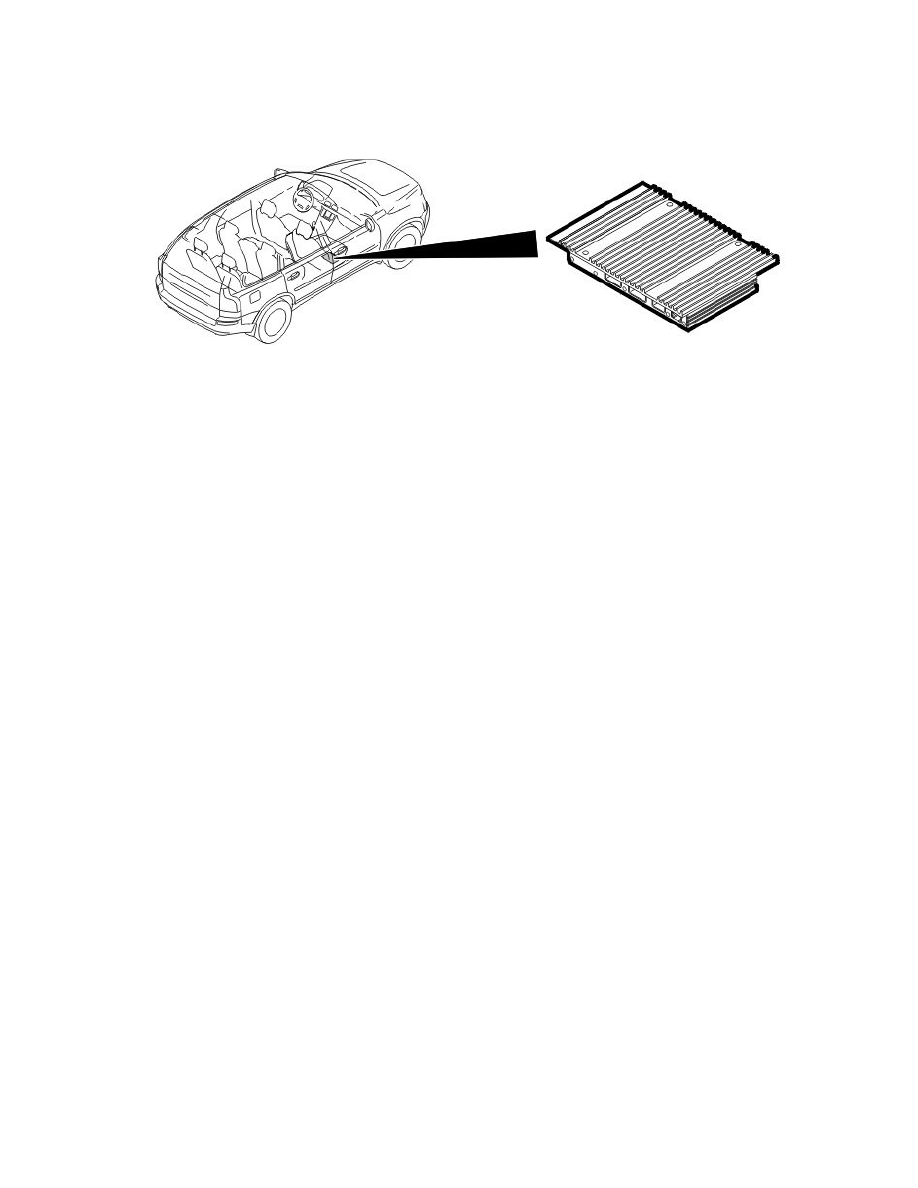XC90 FWD L6-3.2L VIN 98 B6324S (2007)

Design
control module
The audio module (AUD) is an amplifier which is connected to the MOST network. It has the following functions:
-
to carry the sound signal transmitted on the MOST network out to the directly connected loudspeakers and to the headsets as analogue signals
-
to carry voice messages from the microphone, out on the MOST network.
-
to transmit requests from the headset panel to change to the next or the previous track or to change the sound source.
If there is a subwoofer module (SUB) installed on the MOST network, the audio module (AUD) can process the incoming signal and transmit it to the
subwoofer module (SUB).
The following versions of Audio module (AUD) are available:
-
High Performance
-
High Performance HP, Headset panel
-
Premium Sound HP, Headset panel
Audio module (AUD) High Performance and High Performance HP have 4x40 W output and Premium Sound HP has 5x130 W.
Each version of the audio module (AUD) has a different number of loudspeakers and different loudspeaker models.
Functions in the audio module (AUD)
The audio module (AUD) can run a number of different functions, but these functions can also be activated by other nodes. An example of these
functions is lowering and increasing the volume. The signal comes from the infotainment control module (ICM), but it is the audio module (AUD) that
actually changes the volume. The functions are described below.
1. Adjustable volume, raises and lowers the volume
2. Adjustable bass, raises and lowers the bass level
3. Adjustable treble, raises and lowers the treble level
4. System generated sound signals, assist other nodes in the system with single sound signals generated in the control module, for example alarm
signals for the park assistance function.
5. Limiter, the limiter function in the control module does not permit an increase in the power output level if this leads to a fall in sound quality
6. Mixing, mixing allows numerous different sound types to be mixed. In this case, the different sound types are foreground noise, background noise
and system generated sound signals. An example of this is where a CD is playing (background noise) and the carphone rings (foreground noise).
The ringing signal will be heard through the loudspeakers while the volume of the music drops at the same time
7. Digital bass loudspeaker output, via MOST network, transmits signals to Subwoofer module (SUB). No foreground noise must be included in
the signals.
8. Bass compensation, the bass from the control module is compensated or modified depending on the volume level and the speed of the car. If the
vehicle speed and volume level changes, the bass compensation is also changed
9. Treble compensation, the treble in the control module is compensated or modified depending on how the volume is changed. If the volume
changes, the treble compensation also changes
10. Equalizer setting, sound compensation, there are different settings for the sound from the audio module (AUD). This compensates for factors
such as the location of the loudspeakers and the layout of the car interior.
11. Dolby ProLogic II, a surround decoder for playing sound.
There are two types of sound, foreground sound and background sound. The sounds which are foreground and background are listed below.
Foreground sound:
-
navigation
-
system generated sound from the audio module (AUD) (different types of alarm sound)
-
traffic messages.
Background sound:
-
analogue radio, AM/FM
